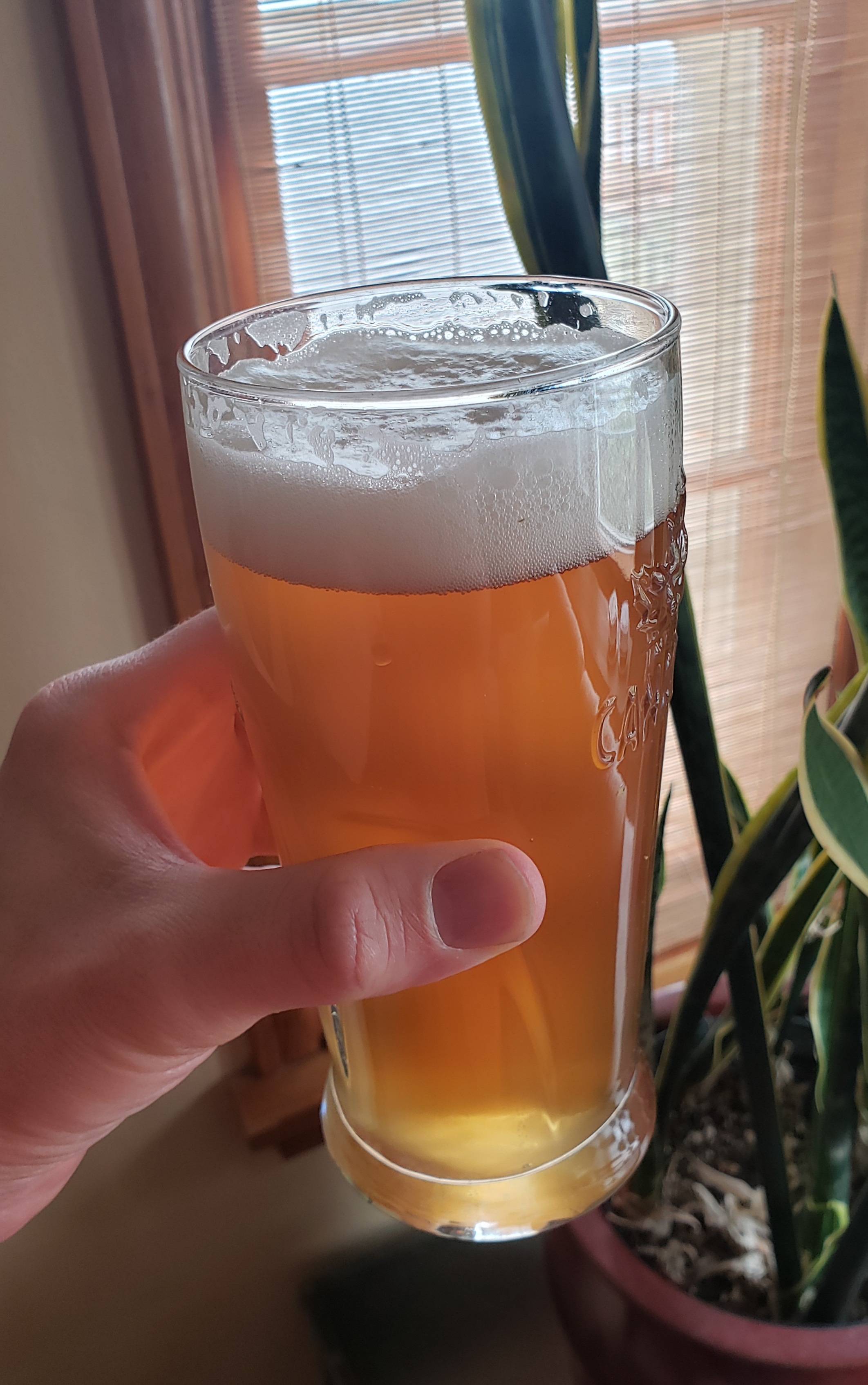My concern would be that the invert won't provide any nutrients but sugar and kveiks really want their nutrients to metabolise the sugar.
I could add in some yeast nutrient. Have you heard of kveik stalling with higher adjunct beers?

My concern would be that the invert won't provide any nutrients but sugar and kveiks really want their nutrients to metabolise the sugar.
I found the Voss stalled with an elderflower fizz ferment. Had to keep adding nutrient and keep it really hot. Got there in the end.
Not sure why you would wait for the malts to be chewed up to add the honey, just add it to your ferment vessel if you don't want it to get hot and lose the aroma. Some do say that the honey can have bacteria etc in it that is disabled by the high sugar content hence adding it on the hot side. Could add it at whirlpool 65 celsius which would pasteurise it. I don't bother and just chuck it in when I've used our honey.
Would recommend that you have a double dose of yeast nutrient and some kettle finings.
Let me know how it comes out as we are just about to harvest our honey.










Buckwheat will come through, don't use too much the flavour can mess a beer up if used too much.I probably will just throw it in the fermentor at the start. I had planed to brew this Sunday, but something unexpected happened and it will be another week before I can. Will report my results back here. I think it will be a nice beer. The only question being if the buckwheat honey character actually comes through.
Okay, I'm trying another angle. What do you all think about a buckwheat honey kveik ale? I'm imaging a simple malty beer with good head retention and pleasant hop character. I'd add up to a pound of honey after it's chewed through the malt sugars. Something like:
KVEIK
1.047 - 1.010, 28 IBU, 5.5 gal
30% 2 Row
30% Munich 6
30% Wheat
10% Buckwheat honey (cold side)
Bittering @ 60
1oz Willamette @ 15 & 2
LalBrew Voss yeast
Buckwheat will come through, don't use too much the flavour can mess a beer up if used too much.
Pasteurize it before throwing it into the beer! There are wild yeasts inside that could create bottle bombs or ruin the beer in other ways.
Cool!Brewed this today, with one change: cascade @ 15 minutes instead of Willamette. Should have results in 10 days, @DuncB
Wax would be solid at those temps, normally solid up well over 40 celsius. Assume you weren't pasteurising.
I think that getting any aroma off honey is tricky when it is being added to bold ingredients. When I made a Manuka smoked malt honey beer the malt completely overpowered the honey which was pahutokawa based. I think honey sugar adds the complexity but aroma not so sure.
The wax on the top would be a great way to reduce oxidation though if it was achievable. Fill bottle, wax oil floats to top and solidifies on the surface perfect. Sadly " ye canna change the laws of physics Jim ".

Didn't think that you were pasteurising just pulling your leg there.
I don't think that it would be Propolis either as that has a very distinctive taste and the bees don't normally have that on the comb. They use it as glue to fill holes and stick things. It almost tastes like pine resin / medicinal it's very distinctive.

Still can't believe how quickly this yeast was able to finish up and I'm excited to see how it tastes carbed up!
This is great to hear because I ultimately opted not to fine with gelatin in case 24 hours wasn't long enough for it to work (I usually do 48 hours)The thing that has shocked me more than the fast fermentation times was how fast the beer cleaned up.
Right now it's got a haze that I would compare to how US-05 looks for the first week or so on draft without fining. Usually I like to serve my beers as clear as possible (when appropriate), but given the rush I've had to throw that out the window. I'll keep you posted on how long it takes to clear up!I didn't find the dried Voss that quick at clearing, but it was in an elderflower wine. But the Opshaug dropped like an anvil in a vacuum.
This is great to hear because I ultimately opted not to fine with gelatin in case 24 hours wasn't long enough for it to work (I usually do 48 hours)
I had only used the omega voss, but did not have very good clarity, it was not awful but not that clear. I figured it had more to do with high pitch temp without a good cold break then it did with the yeast.
I have some the dry voss but I am waiting for the temp to warm up before trying it. I did not get orange from the omega voss, hope I can get it from the dry version.
I did not get orange from the omega voss, hope I can get it from the dry version.